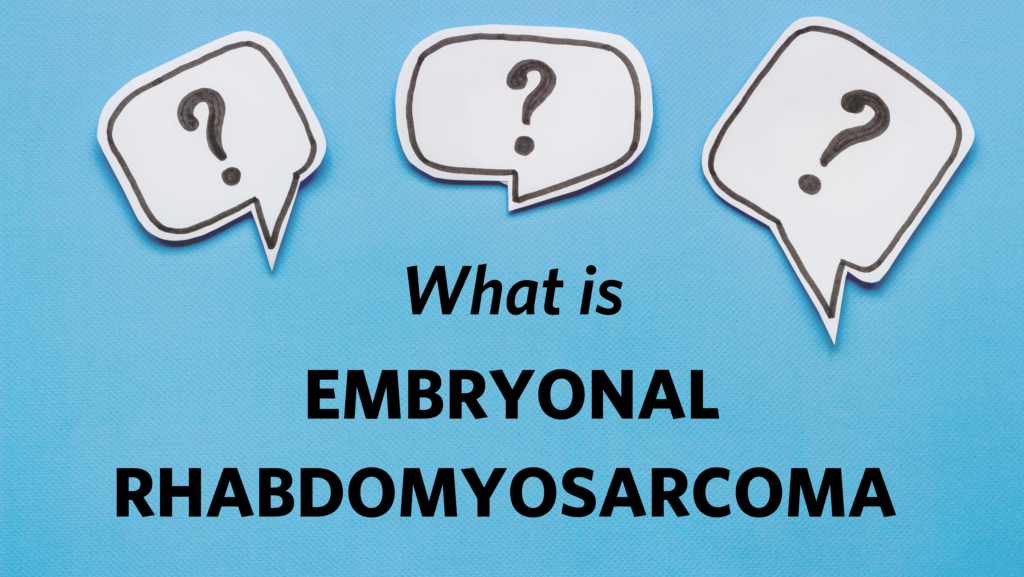
What is embryonal rhabdomyosarcoma?
Embryonal rhabdomyosarcoma is a malignant soft tissue tumor that is formed from embryonic skeletal muscle tissue, the type of tissue that grows into skeletal muscles.
When we think about skeletal muscles, we might first think of biceps or hamstrings, but embryonal rhabdomyosarcoma doesn’t usually start in the arms or legs. Most often, these tumors are seen in the head or neck, bladder, or reproductive organs.
What are the signs and symptoms of embryonal rhabdomyosarcoma?
In many cases, a quickly-growing tumor is what causes noticeable symptoms. Rhabdomyosarcomas have different symptoms depending on where the tumor grows.
For example:
- A tumor in the nose can cause nose bleed or sinus congestion.
- Behind the eye, a tumor can cause blurry vision and bulging of the eye.
- Within the bladder, a tumor can cause obstruction and as a result, difficulty in urinating.
- Tumors in the abdomen can cause pain, vomiting, and constipation.
What treatment options are available for embryonal rhabdomyosarcoma?
Children with embryonal rhabdomyosarcoma usually receive several different treatments that work together, including chemotherapy, surgery, and radiation.
We need your help to find the best treatments for kids with cancer. Donate now to help them grow up and live long, healthy lives >
What is the current state of embryonal rhabdomyosarcoma research?
With early diagnosis and treatment, about 80% of children with embroyonal rhabdomyosarcoma will survive with today’s treatment options. Age, stage, and location of the tumor can affect survival rates.
For kids whose tumors grow back, or when the cancer spreads to other areas of the body, there is currently no effective targeted therapy. More research is needed to learn why these tumors return and spread in order to create new and better treatment options for kids with this type of cancer.
Donate now and help support research into better treatments for kids with cancer.
Read stories of children with embryonal rhabdomyosarcoma:

 SBF
Tweets »
SBF
Tweets »